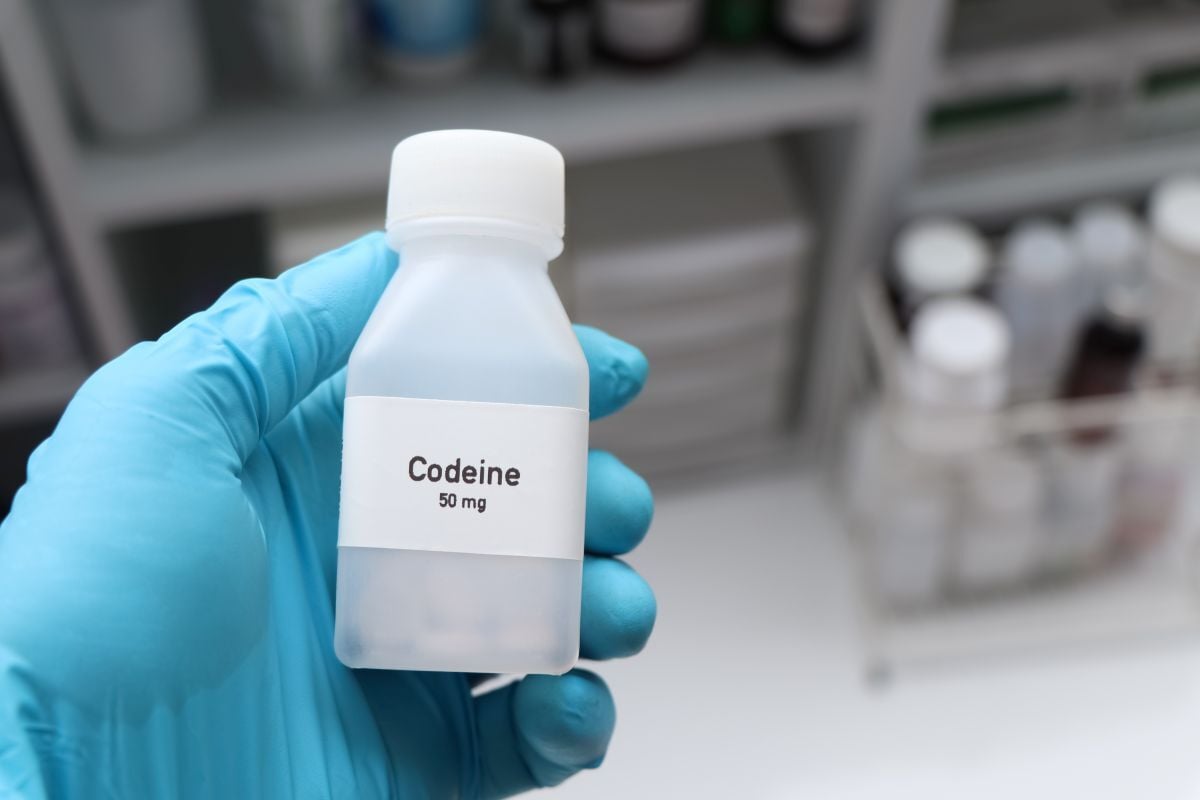Key Takeaways:
- Codeine starts working within an hour and lasts about 4–6 hours.
- Factors like dose, health, and metabolism affect clearance time.
- Codeine shows up on urine, blood, saliva, and hair drug tests.
- Misuse can lead to dependence and addiction with real health risks.
- Treatment and support are available at Avenues Recovery Centers.
When someone takes codeine—whether it’s prescribed for pain, a stubborn cough, or any other medical reason—it’s natural to wonder how long the drug lingers in the body. Maybe you’re concerned about side effects that don’t seem to fade, you’ve got an upcoming drug test, or you’re just curious about what’s happening behind the scenes in your system.
Codeine, like many opioids, doesn’t just vanish once the effects wear off. Your body has to process, break down, and eliminate it, and that process can take different amounts of time depending on a variety of personal factors. Understanding how long codeine stays in your system can shed light on its risks, how it interacts with other medications, and why it can sometimes lead to dependency or misuse if not carefully monitored.
How Long Does Codeine Stay in Your System?
The frustrating but honest answer is: it depends. Everyone’s body processes drugs differently, and several key factors can either speed up or slow down the way codeine is broken down and cleared from the body:
- Dosage and Frequency of Use
The more codeine you take, and the more often you take it, the longer it sticks around. A single, low dose for short-term pain relief may clear from your system relatively quickly, while repeated or higher doses can build up in the body. Someone who has been using codeine regularly may have traces of the drug in their system for a longer period of time than someone who only took it once. - Metabolism and Genetics
Our bodies don’t all work at the same speed. Some people have naturally faster metabolisms, meaning their liver enzymes are able to process and eliminate drugs more quickly. Others have slower metabolisms, or specific genetic variations that change how efficiently codeine is converted into morphine and broken down. This is one of the biggest reasons two people can take the same dose but feel the effects for very different lengths of time. - Age, Weight, and Overall Health
In general, younger people with healthy liver and kidney function tend to clear codeine faster than older adults or those with certain medical conditions. Because the liver and kidneys are responsible for metabolizing and excreting the drug, any illness or impairment in these organs can cause codeine to linger longer in the body. Body weight and fat content may also influence how codeine is distributed and stored. - Hydration and Lifestyle Habits
Something as simple as how hydrated you are can make a difference. Staying well-hydrated helps the kidneys flush out drugs more efficiently. On the other hand, dehydration, poor nutrition, or lack of sleep can slow the body’s processing ability. Even lifestyle choices like alcohol use, smoking, or other drug use can interfere with the way codeine is metabolized. - Other Medications
Because codeine is processed in the liver, taking it alongside other medications that use the same liver enzymes can change how quickly or slowly it’s broken down. Certain antibiotics, antifungals, antidepressants, and even herbal supplements can interact with codeine’s metabolism, either prolonging its presence or making it less effective.
What is Codeine, and How Does it Work?
Codeine is one of those medications that many people have heard of, but not everyone fully understands. It belongs to a class of drugs called opioids, which are derived from the opium poppy plant or made synthetically to mimic its effects. Unlike stronger opioids such as morphine or oxycodone, codeine is considered a “milder” opioid. For that reason, doctors often prescribe it to treat moderate pain, or combine it with other ingredients in cough syrups to quiet a nagging cough. Once swallowed, codeine travels through the digestive system and is absorbed into the bloodstream. From there, the liver takes on the job of breaking it down. A portion of codeine is converted into morphine—a much stronger opioid—which is where many of its pain-relieving and sedative effects come from. This conversion process is part of what makes codeine somewhat unpredictable; different people metabolize it at different rates depending on their genetics, age, overall health, and even whether they’re taking other medications at the same time.
How Long Does Codeine Take to Work?
For most people, codeine doesn’t take very long to kick in. After swallowing a pill or syrup, the drug usually starts working within 30 to 60 minutes, with peak effects arriving about one to two hours later. That’s when pain relief or cough suppression feels the strongest. However, the exact timing can vary. Taking codeine with food, for example, can slow down how quickly it’s absorbed, while body weight and metabolism also play a role.
Codeine Half-Life:
A drug’s half-life is the amount of time it takes for half of the drug to be broken down and eliminated from the body. For codeine, the average half-life is about three hours. That means after three hours, only half of the original dose is left in your system. After another three hours, half of that remainder is gone, and so on. It usually takes five to six half-lives for a drug to be considered fully eliminated from the body, so in the case of codeine, that works out to somewhere between 15 and 18 hours for most people.
It’s also worth noting that even after codeine is broken down, its byproducts—like morphine—can still show up on drug tests. So while the main effects may fade after a few hours and the bulk of the drug may be gone after a day, detectable traces may stick around for several days depending on the type of test used.
Does Codeine Show up in a Urine Drug Test?
The short answer is yes, it does. Urine testing is the most widely used method for detecting opioids. So, how long does codeine show up in urine? In most cases, codeine can be detected in urine for about 24 to 48 hours after use. For people who use codeine frequently or in higher doses, the detection window may extend up to 72 hours. Because urine tests are inexpensive and reliable, they’re the go-to choice in workplaces, treatment programs, and legal settings.
Blood Tests
Blood tests are less common, since codeine doesn’t stay in the bloodstream for very long. Typically, codeine can be found in blood for up to 24 hours after the last dose. Blood tests are usually reserved for situations where very recent use needs to be confirmed, such as emergency medical care or accident investigations.
Saliva Tests
Codeine can also be detected in saliva, though the window is fairly short. Most saliva tests will show traces of codeine for about one to two days after use. Saliva testing is often chosen because it’s quick and noninvasive, but it isn’t as reliable for detecting older use.
Hair Tests
Hair follicle testing paints a much bigger picture. Codeine can show up in hair for up to 90 days after use, depending on the length of the hair sample collected. While hair testing is excellent for identifying long-term patterns of drug use, it doesn’t reveal recent or one-time use very well, since it takes a week or so for codeine to grow into the hair shaft.
Breastmilk
An important but sometimes overlooked area is codeine’s presence in breastmilk. Because the drug and its metabolites can pass from mother to infant, codeine use during breastfeeding can be risky. Trace amounts can show up in breastmilk for as long as the drug is active in the body, and in some cases, infants may be more sensitive to its effects than adults. This is why healthcare providers often caution against using codeine while nursing.
Codeine Addiction Treatment
While codeine is often prescribed as a “milder” opioid, it still carries a real risk of dependence and addiction. Because it changes the way the brain and body respond to pain and stress, people can develop a tolerance—meaning they need more of the drug to feel the same effects. Over time, this can spiral into physical dependence, where stopping codeine suddenly causes uncomfortable withdrawal symptoms, and eventually into full-blown addiction.
Recognizing codeine addiction isn’t always easy. It can start innocently, with a prescription for pain or cough relief, but gradually a person may find themselves taking more than recommended, craving it when it’s gone, or feeling unable to cope without it. Common signs include mood swings, drowsiness, constipation, secretive behavior, and neglecting responsibilities in favor of using the drug.
The good news is that help is available, and recovery is possible. Treatment for codeine addiction often begins with a medically supervised detox, where the body is safely guided through withdrawal under the care of professionals. This is followed by therapy and counseling to address the emotional and psychological roots of addiction, as well as support groups and relapse-prevention strategies to build a strong foundation for lasting recovery.
At Avenues Recovery Center, we understand that opioid addiction can feel overwhelming—but you don’t have to face it alone. Our team of compassionate professionals provides individualized treatment plans tailored to your needs, offering a combination of medical support, therapy, and community to help you regain control of your life. Whether you’re just starting to realize codeine has become a problem, or you’ve been struggling for a while, Avenues is here to walk with you every step of the way.
If you or someone you love is battling codeine addiction, don’t wait. Reach out to Avenues Recovery Center today and take the first step toward freedom, healing, and a healthier future.



